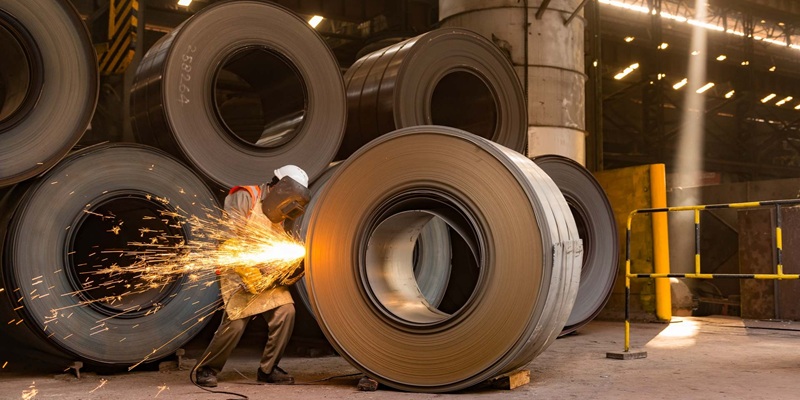Schedule a Call Back
Cleaning Robots Work in Perfect Choreographic Harmony
 Technical Articles
Technical Articles- Apr 07,11
New equipment concept for flexible cleaning of OEM automotive parts
Industrial robots, as a rule, are easy like - at least for industrial users. They never complain, do not call in sick and - increasingly advantageous in our day and age - lack the urge to pop out for a cigarette break. Afforded the right maintenance, they just keep on pulling their weight, even under conditions no human would tolerate. Rarely will an industrial robot act on its own whims - unless as scripted by its programme. Witness the TV commercial of a French car manufacturer in which a spray-painting robot gets 'creative' and produces Picasso-style artwork on a car body.
A robot system of quite different calibre recently left the workshops of D?rr Ecoclean in Monschau/Germany, en route to its destination in an automotive manufacturing plant. No less than four of these electromechanical team members are intended to serve in a single cleaning line there (Figure 1). And the way in which the four robot cells operate side-by-side seems to suggest a choreographic sensibility on the part of their programmers. Yet the purpose of this "ballet' is simply to advance parts flexibly to a higher level of cleanliness - in a succession of steps which involves a complex sequence of movements.
But let us start at the beginning. In the automotive industry, demands on the cleanliness of assembly parts are growing more exacting almost by the day. ABS controllers, injectors and high-pressure diesel injection pumps tolerate no contamination whatsoever, whether in the form of oil residue from prior production steps or as solid particles adhering to their surface. Such foreign matter may cause part failures, which, in turn, lead to vehicle breakdowns - a worst-case scenario for any manufacturer. 
Diversity Without End
For a parts supplier, the cleanliness problem is further aggravated by the multitude of different parts, which may go into the same car series. To explain this phenomenon, let us consider a diesel injection pump. Almost without exception, car manufacturers today sell their vehicles all over the world. But different markets impose different standards in terms of exhaust gas control, fuel grades, torque curves, or even general engine performance data.
One way of handling these parameters is by adapting and changing the design of the injection pump. Although it may look virtually identical anywhere in the world, this kind of pump comes in many variations. For instance, the size and number of holes, different geometries, or variations in surface finish may vary. All this variability must be managed for product lot sizes ranging up to several hundred thousand items per year. And whenever a manufacturer includes a new engine in its range or modifies an existing type, its suppliers have to respond quickly and reliably. A new or modified part must not be allowed to be become a 'show stopper' in the ongoing production run. A solution to these issues is provided by the D?rr Ecoclean system mentioned above. The fourth of these installations - code named 'Robolink' - has just been completed and handed over to the customer. For a Robolink system to work efficiently, the range of parts to be handled must share identical robot gripping points. Once this is ensured, the system can clean parts in any succession or quantity - even one-off items - in one continuous sequence.
3 - 2 - 1 - Dry!
The "choreographed" cleaning process always starts at the loading station, where the code appearing on each part is read by a camera (2), which feeds the required information to the cleaning system and enabling the programme to start. The first robot, located in the No. 1 cell, grips the part and executes the preset cleaning programme. In this installation, the first cell is a pre-wash performed by an injection flood wash system using stationary spray nozzles (Power-IFW, Figure 3). Flexibility is ensured by replaceable mounting plates on the multi-purpose tank, which allow further cleaning processes to be added as required. Once this robot has completed its wash programme, it unloads the part on a small transfer table attached to the wall of the neighbouring robot cell No. 2. A hinged hatch near the transfer table opens automatically and allows the robot in cell No. 2 to grip the part.
The part is then subjected to a high-pressure deburring cycle at 300 to 600 bar pressure, depending on user specifications (Figure 4). The high-powered pumps needed for this step are pressure-controlled via variable frequency drive units. The options available include high-pressure components such as lances for deep holes, nozzle rakes for smaller surfaces, or rotary nozzles covering larger areas. Moreover, flat and solid-jet nozzles can be employed for pinpointed deburring tasks. 
No Bottlenecks
Since high-pressure deburring takes the longest time of all processing steps involved (depending on the part geometry), the No. 2 cell in the Robolink line is larger than the others. It can, if necessary, accommodate a second robot (which would then be the fifth in the entire system) to guarantee the desired cycle time of around 40 seconds. A potential bottleneck at the high-pressure deburring station can thus be easily avoided.
Part transfer to robot No. 3 in the third cell is once again accomplished by a small wall-mounted table with a hatch behind it. In this cell the part undergoes fine cleaning with a subsequent blow-off cycle (Figure 5). This blow-off step removes the cleaning fluid from the part already in the transfer station. The air is applied by the blue nozzles shown in Figure 5.
Progressively Finer and Cleaner
The step-by-step nature of the cleaning process is reflected in the gradual filtration of the cleaning fluid. In chamber 1, particles down to 20 ?m are filtered out, while in cell No. 2, solids down to 5 ?m particle size are removed. In cell No. 3, the filter captures particles down to as small as 1 ?m. In order to avoid re-contamination by the surrounding shop air at this high degree of cleanliness, the system's air handling equipment is of appropriately sophisticated design. 
The entire Robolink installation is run at a positive pressure to prevent any ingress of dirt-laden air. The cleaned parts exit from the system in cleanroom production environment. However, before this happens, the parts must be dried in the fourth cell. The last robot takes the part from the transfer station at cell No. 3 and places it in one of the two vacuum-drying chambers.
While the part is dried and eventually exits from the station through an air lock, the robot already loads or unloads the second chamber. The two chambers are thus used in parallel to allow sufficient drying time. In this manner, cycle time targets can be met or even reduced, and there is no standstill time of the robot as it will make use of the drying phase by moving on to handle another part. Depending on the customer's manufacturing environment, the finished parts can then be removed by hand or delivered to their destination by a belt conveyor.
Development with the Customer
In all, it took one year to develop this system in close coordination with the customer, an OEM supplier to the automotive industry. The resulting equipment meets all of the end user's requirements. Along with the actual cleaning specification, flexibility was identified as a key objective. This involved the creation of various programming and plant control options, plus the possibility to retrofit additional robots and nozzle systems.
Theoretically, the system can handle 9,999 different parts using a separate programme for each. Each cell operates independently and the enclosed utility systems, handling background functions such as the supply of cleaning fluid and filtering tasks, allow the Robolink to serve diverse requirement scenarios. It will be interesting to see where this type of 'choreographed' robot technology will make its next performance.
Contact: Tbd (in Monschau: Joachim W?nsch)
(Article courtesy: D?rr Ecoclean, Cleaning and Filtration Systems. Contact: Mangesh Agarwal, General Manager, India. Mobile: 098231-10049. Tel: 020-30585001. Fax: 91-20-30585000. Email: mangesh.agarwal @ecoc-lean.durr.com)
Related Products

Delvo Screwdrivers
Pneumec Kontrolls offers a wide range of Delvo screwdrivers. Delvo screwdrivers, made by Nitto Kohki, are well-regarded electric screwdrivers used in industrial and assembly line settings. Here are Read more

Togawa Paint Hoses
Pneumec Kontrolls offers a wide range of Togawa paint hoses.

Silent Wide Range Linear Slides -QW Series
IBK Engineers Pvt Ltd offers a wide range of silent wide range linear slides - QW Series














